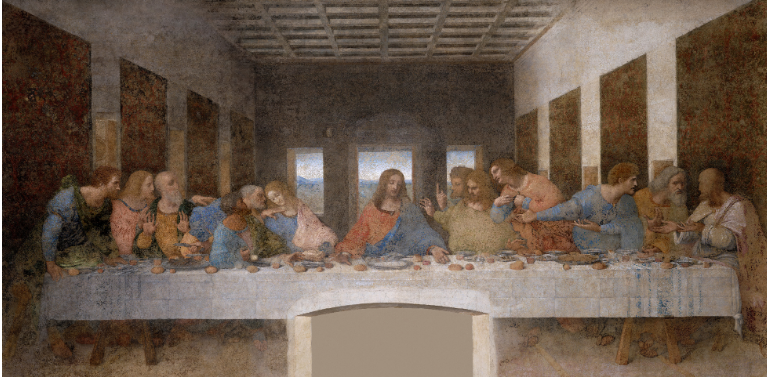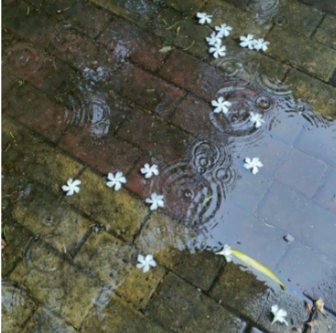Iconoclassic: A Reexamination of Classic Literature By Alexandra Rae
- Breanna Crossman
- Apr 7, 2024
- 7 min read
Updated: Apr 8, 2024
The Brontë sisters! Shakespeare! Dostoevsky! How I loved you so. With your heights of wuthering and sonnets and crime. I think I would have loved you more had I actually read your stories. I’ve heard the praises and literary theories; the sometimes tense discussions over what your last lines actually meant. You are all part of a discourse I have yet to take part in – but what am I missing out on, if anything?

Collage by Alexandra Rae
I am a writer who has read very little classic literature (sue me!). Though the very parameters of what makes a book a classic are ever changing and under constant scrutiny, which I will address later, I can count on two hands how many supposed “classic” books I’ve read from Goodreads “Top 100 Must Read Classics” list: To Kill a Mockingbird, The Great Gatsby, Animal Farm, Lord of the Flies, Romeo and Juliet, Alice’s Adventures in Wonderland, Lolita, The Bell Jar, and The Giver. Most were read for school. A few I don’t recall the actual act of reading, just the subsequent papers and presentations. My Honors English Class did a play on the tragedy between the Montagues and Capulets, where I played Woman #3 and said two lines before running out of the cafeteria (the auditorium stage was reserved for the school’s Drama Club, where the actresses practiced stabbing themselves in the heart behind the blue curtains). I became obsessed with A Time to Kill shortly after I read TKAM, which perhaps speaks to both the longevity of these similar stories over time and Matthew McConaughey’s performance as formidable lawyer Jake Brigance. All I remember from The Giver is a baby being given one last memory of sunlight to keep warm. And yet when I hear people talk about the classic stories they’ve read and collected throughout their lives, a strange incoherence pulses through me; my brain short circuits. I say nothing. What kind of fool am I, to want to write without having read the canonized and their immortal words?
I grew up on R.L. Stine, Alvin Schwartz, Stephen King, Harry Potter, Sarah Dessen. Ghosts and wizards and girlhood. As I used to tell people, I was into “spooky shit,” with a penchant for women’s voices that grew with me as I aged. A voracious reader I was – but not of the stories that seemed to matter in academia.
In the many places I called home during my childhood, there was always access to literature, whether from a local library or at home. One year we had a guest bedroom filled with my siblings’ toys and stacks and stacks and stacks of my books. Not having the classics in my stacks was not because of any inability to acquire them, but, rather, a choice to gravitate towards the reading material I actually felt gravitated towards. I never felt any desire to explore Edith Wharton’s The Age of Innocence, so I didn’t. It’s not that I would never want to read this book or any of the other classics I missed. These stories were simply not my calling as a young reader. What I’m trying to say is this: it was a privilege for me not to read classic literature. I chose not to. There are millions of kids who grew up without this choice, but still face backlash from a world where classics are placed on a pedestal above all other stories.
According to Esther Lombardi in “Literature Definitions: What Makes a Book a Classic” on ThoughtCo., the definition of classic literature varies but its core qualities remain the same. To be considered a classic, a book must express artistic quality, possess lasting recognition beyond the period in which it was written, have universal appeal, allude to other influential works, and be relevant to multiple genres (Lombardi). While it is clear how there are books under the “classic” category that meet these criteria, there is still the question of who created this list of criteria in the first place. There isn’t a clear answer on this topic, but what is clear is how the U.S. schooling system, specifically high schools, have been big proponents in deciding what books are deemed worthy of classic stature. This can lead to two bigger issues following students after they graduate: either they attend a high school where the classics are taught and are led to believe that stories have to be written a certain way to receive admiration, or they attend a high school which doesn’t have the money, teachers, or resources to teach these texts. The latter often leads to students facing ridicule and feeling ostracized in higher education.
Classic literature is subjugated to this kind of social analysis in our modern culture. Educators Tricia Ebarvia and Julia E. Torres conducted their own analysis in their Penguin Random House article “What is a ‘Classic’?” One of the most important points they brought up relates to their own experiences of being students of color in U.S. high schools:
“Although people of color comprise the global majority, and despite the historical fact that there exists a rich legacy of literary contributions by people of color in oral and written texts, many U.S. high school curricula tend to be focused on ‘Great Books’ that center white, Eurocentric, and Western points of view” (Ebarvia and Torres, 2).
Reading classic literature is not only about social class and the access one has to books depending on that class, but also about the whiteness that prevails most of these texts. They lack, as Ebarvia calls attention to, literary mirrors, which can offer readers a source of recognition and affirmation as they see characters, settings, and lives that are parallels to their own. Ebarvia writes she “could not find a single mirror in the books my teachers gave me, [so] what else could I conclude except that people who looked like me— or who had experiences similar to my own or my ancestors—were not capable of writing ‘classics’ or having lives worthy of representation in great literature?” (2-3). Writing a story only meant for one audience may not have been the writers’ intent (though depending on the time and culture in which it was written it certainly may have been), but that is often the impact felt by their words, especially for writers, readers, and educators of color. If we are to accept classic American literature as White – in who wrote it, the people it represents, and the people who read it – then we are accepting the Whiteness it perpetuates in the institutions and academic spheres where Whiteness dictates what is “great.” To not question the hallmarks of great literature of the past is to allow this cycle of Whiteness to continue.
Language itself also becomes a barrier when reading classic literature. I attended a predominantly white school where annotated and “simplified” versions of classic texts were taught. Any time I attempted to read the original versions of any piece of classic literature, I often couldn’t make it past the first chapter. A common issue surrounding these texts is the belief that readers shouldn’t struggle to comprehend the narrative. A first read is enough to understand the storyline, characters, context in which the book was written, and underlying themes according to professors and gatekeepers of dark academia on TikTok. Despite the dialect often being entirely different from what we use today, language used in classic literature is seen as “proper” English and a way for all readers to engage in meaningful conversations with each other about the text. As a white reader and writer, I am more likely to be the targeted audience for a majority of the classic texts taught in high schools. This leads back to the writers’ intent versus impact, as I am supposedly a person they sought to write for (based on my race alone). Regardless of whether or not I am part of their ideal audience, I struggle to read, and by that I mean comprehend and enjoy, most of their works. I don’t think I struggle with this because I am stupid. I think I have a hard time sitting down and reading Jane Eyre because it is not the story with my mirror in it. If I feel this way about representation and lack of enjoyment from reading classic literature, then readers and writers of color are likely to feel this tenfold when seeking mirrors in these same books. Three-sugars-pls on Tumblr said it best:
“It’s okay if you got bored after one chapter of Wuthering Heights, and couldn’t be bothered to read the rest…You’re not stupid. No piece of literature is inherently better, more ‘important’, more ‘meaningful’, or more ‘intellectual; than another. First and foremost, read what brings you joy.”
So let’s do it: let’s read what brings us joy. But what to do with classic literature – do we stop teaching it? Cancel it? Destroy it? Leave the words of the past in the past? I believe abandoning or ignoring these works isn’t the solution to resolving the issues that stem from the institutions upholding them. There is merit in reading classic texts and understanding why they were written and for whom, even as answers to the latter are not nearly as interesting or diverse as the answers that come from questioning the contents of the books themselves. Rather, it is our definition of what makes a book a classic that needs to be reshaped to align with our new dynamic world of literature. I advocate for writer Min Jin Lee’s definition of a classic: “A classic is an imperfect, created, and beloved object – we turn to a classic to remind us to reach, to make, and to feel again.” Using her approach to classics, readers have the power to transform what is representative of our culture; what speaks to us through words and narrative. It is our hands who reach for these books on shelves, our ability to create that determines the future of art and literature. In our pursuit of timeless tales, let us not forget the stories we write now can become part of the forever.
A new era of classics is on the rise. This time, with far more mirrors.
Works Cited
Ebarvia, Tricia , and Julia E. Torres. “What Is a Classic?” Penguin Random House, 2024. https://penguinrandomhousehighereducation.com/wp-content/uploads/2022/05/4879_Classics-Guide_Intro-brochure_04122.pdf.
Lombardi, Esther. "Literature Definitions: What Makes a Book a Classic?" ThoughtCo, Aug. 27, 2020, thoughtco.com/concept-of-classics-in-literature-739770.
Alexandra Rae (she/her) is prose writer & editor based in the U.S. She deeply admires the works of genre-bending artists like Lauren Slater and Nick Flynn and seeks to push the boundaries of narrative within her own work. Alexandra also loves women-centered stories that destroy stereotypes and conventional portrayals of female characters. She edits for Outlander Zine and posts her poetry & prose on instagram (@theresonationofalexandra).



Comments